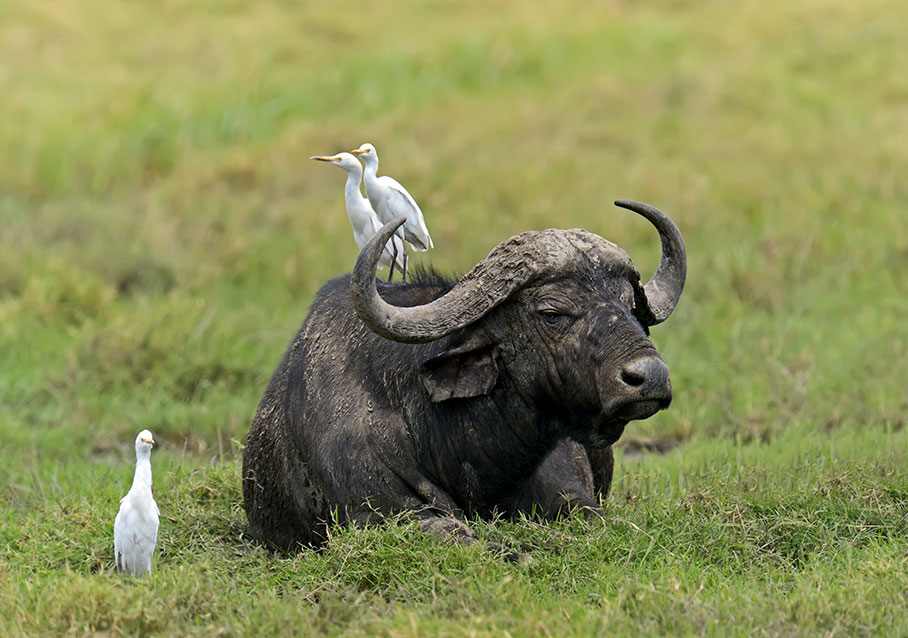Ngorongoro Conservation Area
The Ngorongoro Conservation Area covers 8,292 square kilometers. It is one of the three divisions that comprise Ngorongoro District in Arusha Region. The jewel in Ngorongoro’s crown is a deep, volcanic crater, the largest un flooded and unbroken caldera in the world. About 20kms across, 600 meters deep and 300 sq kms in area, the Ngorongoro Crater is a breathtaking natural wonder.
UNESCO protected World Heritage Site and an International Biosphere Reserve, the Ngorongoro Conservation Area is situated some 190 km. West of Arusha, between Lake Manyara and Serengeti National Parks. Covering approximately 8,288 square km, the Ngorongoro Conservation Area consists of the Ngorongoro Crater itself, the Olduvai Gorge and Ndutu, the Empakai crater and the Oldonyo Lengai Mountain. The Ngorongoro Conservation Area is a pioneering experiment in multi-purpose land use where people (the Masai), their livestock and wildlife coexist and share the same protected habitat.
The crater floor is covered with plains animals, including wildebeest, zebra, gazelles, elands, rhino, and a large predator population of lions, hyena and jackal which can all be viewed at close quarters. Cheetah and leopard can also be seen here. The altitude at the crater rim is about 2286 metres above sea level, and temperatures can get quite chilly in the evening.
Ndutu Area
Ndutu is located well within the Ngorongoro Conservation Area but right on the door step of the vast Serengeti National Park, Lake Ndutu, and its smaller sister lake, Masek, sit at the head of the world renowned Olduvai Gorge. Olduvai Gorge cuts through rock beds layered in time sequence from 2 million years ago to the present. It is here where humanoid bones have been found dating back to over 1.75 million years including a direct ancestor of modern man. Fossil footprints have also been found here and are the most ancient footprints yet discovered. There is an excellent site museum where you can explore the diggings with a guide and it is also a great place to view birds. Lake Ndutu and Lake Masek form shallow basins where water accumulates from the nearby areas of slightly higher altitude. The water in both lakes is extremely saline (also called soda lakes), too saline for human consumption. The Ndutu area becomes alive with animals during the migration because it is surrounded by the Ndutu woodlands and the Short Grass Plains which provide ample cover and food. The best and most likely time to see huge numbers of wildebeest is from December through March when they give birth to their young.





